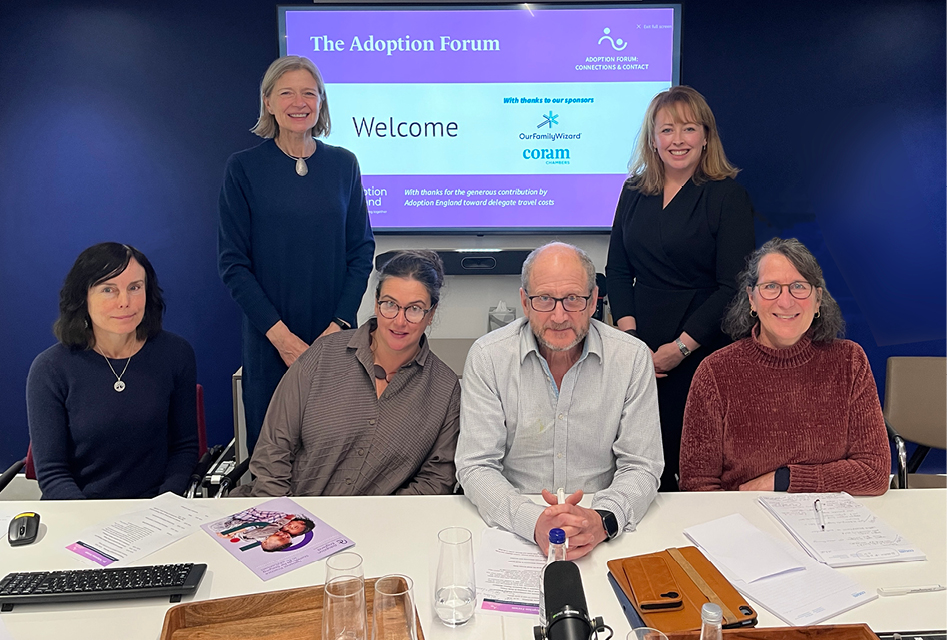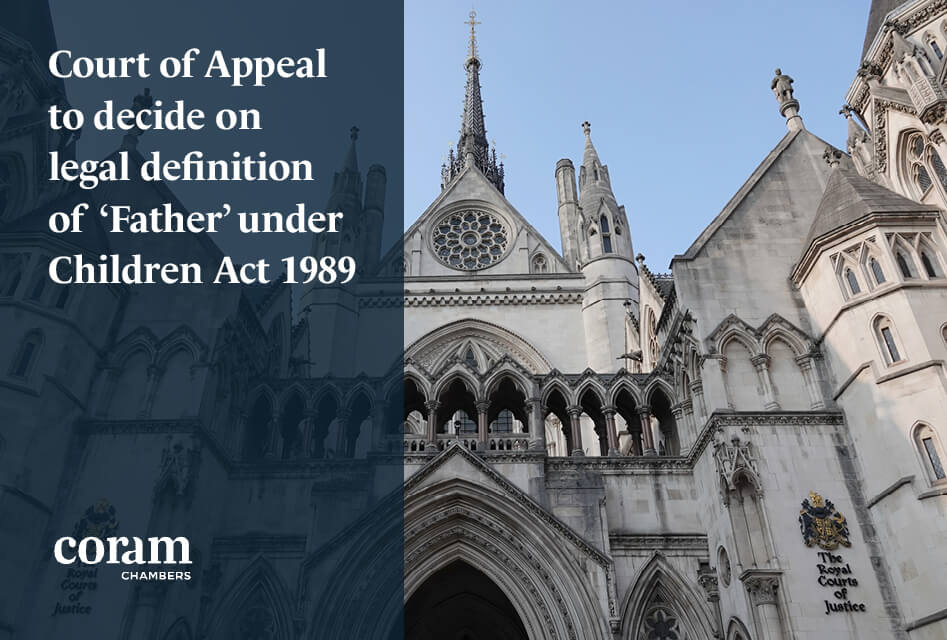Dr Bianca Jackson is the the Head of Coram’s Alternative Families practice group. She has written a follow up article on the decision of Bell v Tavistock for Family Law Week.
Introduction
As set out in my previous article, the decision of the High Court in Bell & Anor v The Tavistock And Portman NHS Foundation Trust [2020] EWHC 3274 (“Bell v Tavistock“) arguably raised more questions than it answered for transitioning children and their families. The principal legal issue for the court to adjudicate in Bell v Tavistock was whether a child or young person under the age of 16 could achieve Gillick competence in respect of the decision to take puberty blockers [133]. The court specifically declined to address whether parents could consent to the use of puberty blockers on their child’s behalf, as this was not the Gender Identity Development Service’s (“GIDS”) policy; GIDS relied on consent of the child or young adult being treated [47]1.
Whilst it was appropriate in the circumstances of Bell v Tavistock for the court to limit its inquiry to Gillick competence, it undoubtedly left a lacuna as to whether the administration of puberty blockers to children under 16 based on parental (together with clinical) consent required court oversight. This has led to a number of difficulties for transitioning children and their families, from the inability of trans children to access puberty blockers to referrals to social services.
The recent case of AB v CD and others [2021] EWHC 741 has provided some much needed clarity on this issue. Yet there continues to be confusion amongst professionals and lay persons about what Bell v Tavistock and AB v CD and others mean in practice. This article will examine the court’s decision in AB v CD and others and highlight the main principles of the law relating to the administration of puberty blockers to children and young persons following these two important judgments.
AB v CD and others
AB v CD and others concerned an application by AB, the mother of XY, for a declaration that she and CD (the father of XY) had the ability in law to consent on behalf of XY to the administration of hormone treatment to suppress puberty (i.e. puberty blockers) without the need for a “best interests decision.” The Tavistock and Portman Trust (“the Tavistock”), which is home to GIDS, was the respondent to the application, as well as the University College London NHS Foundation Trust, which works with GIDS to provide paediatric and adolescent endocrinology services to treat patients with gender dysphoria and had been intervenors in Bell v Tavistock. The child and CAFCASS were also represented.
The central question at the heart of AB v CD and others, as set out by Sir James Munby in an interlocutory judgment in the proceedings, can be summarised as follows: do parents have the ability to provide operative consent to the administration of puberty blockers on their child’s behalf, or do puberty blockers fall into a “special category” of medical treatment which requires – or good practice demands – court oversight? [34]. As XY’s competence had not been recently assessed (albeit she claimed competence), the court looked at the operation of parental consent both where the child was and was not deemed Gillick competent. In respect of the former scenario, the court further examined whether a parent’s ability to consent disappeared once the child or young person achieved Gillick competence.
The court held that parents could consent to the administration of puberty blockers to their child, both where the child was and was not Gillick competent2. This is in line with current medical practice: most serious medical treatments, including the withdrawal of life support and experimental interventions, can be undertaken without court intervention where the clinicians and the parents agree3. Further, whilst court did not resile from the view taken in Bell v Tavistock that the use of puberty blockers is “experimental” and reiterated that they are “controversial” [119], it held that puberty blockers do not fall into a “special category” of medical treatment requiring court authorisation, either as a rule or good practice4.
Mrs Justice Lieven – who had also presided over Bell v Tavistock – did sound two notes of caution: firstly, she expressed concern that the “fixed” positions of the first and second respondents were such that it might make it difficult for a parent to be given a truly independent second opinion [123], and secondly, she highlighted the pressure that gender dysphoric children may place on their parents to consent to the administration of puberty blockers (though the court acknowledged that there was no suggestion of this in the current proceedings and the judge had no evidence before her on this issue). Mrs Justice Lieven concluded that the first issue was a matter for various regulatory bodies, the NHS and the Care Quality Commission, rather than the court. In respect of the second issue, she advised that clinicians should remain live to this and should bring the matter to court if the case was finely balanced or there was disagreement between them. However, she did not view either of these concerns as a reason to resile from the court’s decision that parents can consent to the administration of puberty blockers on behalf of their children.
Changes to GIDS
Following the decision of AB v CD and others, the NHS altered the clinical approach that it had adopted for GIDS post-Bell v Tavistock, which was predicated on the need for court oversight. In short, the NHS held that for children under the age of 16 who are existing patients and already being prescribed puberty blockers, parental consent could be relied upon provided that: (i) the child agreed; (ii) the GIDS team concluded that this was in the child’s best interests; and (iii) the process resulting in the recommendation to continue prescribing had been considered and supported by a new and independent multi-professional review group. According to NHS England and Improvement (“NHSEI”), the role of the review group is not to endorse or refuse treatment but “to ensure appropriate decision-making processes have been followed, particularly with regard to assessing and supporting consent to treatment.”5 It is only applicable to users under the age of 16. If the review group has any doubts about whether the decision-making process was robust, the Tavistock will have the opportunity to apply for a “best interests” decision from the court. However, it is important to note that treatment will not be withdrawn from existing patients until the outcome of the review group or further consideration by the court – presumably in the Bell v Tavistock appeal in June 2021– is known6.
The Tavistock paused all new referrals to the GIDS’ endocrinology service in December 2020, following the decision in Bell v Tavistock, while it carried out clinical reviews of existing patients. This remains the position to date, though the NHSEI states that once the Tavistock decides to resume making new referrals into the endocrine clinics, the interim process will follow the new process for existing patients as detailed above. However, the NHSEI advises that until the new review group becomes operational, the absolute requirement to seek a best interests order from the court before treatment is commenced will remain in place.
It is perhaps otiose to add that the above clinical approach applies to the NHS Trust only; there is no requirement for other medical practitioners who rely on parental consent to adopt, for example, a multi-professional review group (which could arguably be construed as contrary to the intention of the court in AB v CD and others). Indeed, as noted in AB v CD and others, GPs are not parties to the contracts between the NHSE and NHS Trusts, and are therefore not contractually bound by their terms [27].
The Implications of Bell v Tavistock and AB v CD and others in Practice
Notwithstanding the decisions of the courts in Bell v Tavistock and AB v CD and others, there continues to be confusion among professionals – from GPs and social workers to legal practitioners– about what the judgments mean in practice for trans children and their families. As such, it may be helpful to outline the main principles that can be derived from both judgments (though pending appeal in Bell v Tavistock):
1. There is a presumption that children over the age of 16 have the ability to consent to medical treatment, including the administration of puberty blockers, and it is up to the clinicians whether they want to seek court oversight (i.e. there is no requirement to do so);
2. Children under the age of 16 are unlikely to be able to provide informed consent for the administration of puberty blockers (and in the case of children 13 and under, highly unlikely). As such, if the basis of administration is the consent of the child, court oversight will be needed, in the form of a “best interests” decision.
3. However, if the basis of administration is parental consent, court oversight is not needed save where there is disagreement between the parents, child and clinician(s). In other words, parents can consent to the administration of puberty blockers on behalf of their children.
A Note about Significant Harm and Child Protection
Given the confusion around the implications of Bell v Tavistock and AB v CD and others, it is perhaps equally important to address what the judgments did not say. As intimated in the introduction to this article, one of the consequences of the Bell v Tavistock decision has been an increase in referrals to social services on the sole basis that a parent is seeking puberty blockers for their child. Whilst AB v CD and others elucidated the court’s stance on parental consent, these referrals have continued, with professionals interpreting the judgments as criticising or even proscribing the administration of puberty blockers. In some cases, s.47 investigations have been initiated and/or the transgender child has been placed on a Child in Need plan.
As public law practitioners will be aware, the test for the making of public law orders under s.31(2) of the Children Act 1989 is twofold: not only must the court be satisfied that the child is suffering or is likely to suffer significant harm under s.31(2)(a), but also the court must be satisfied pursuant to s.31(2)(b) that the significant harm or risk of significant harm is attributable to care given or likely to be given to the child, that care not being what it would be reasonable to expect a parent to give the child.
Though the court did not deem the administration of puberty blockers as fundamentally “harmful,” the subsequent categorisation of them as such may be the result of a misinterpretation or amplification of the concerns that the court raised in Bell v Tavistock, and which the court in AB v CD and others did not resile from. Reliant on the evidence before them, the court described puberty blockers as “unusual” [134], “complex” [34], and “experimental” [134; 143], with a “limited evidence base” [28]7. It is those views, especially as set out in paragraphs 134-139 of the judgment, that form the basis of the reasoning for the court’s ultimate decision that children under the age of 16 are unlikely to be able to provide informed consent and court oversight is needed.
However, it is important to note that the court was not being asked to decide whether children under 16 with gender dysphoria should or should not be treated with puberty blockers and the benefits or detriments of said treatment. As the court aptly notes early on in the judgment, that was not a decision for them [9]; the sole legal issue in the case was whether a child or young person under the age of 16 could achieve Gillick competence in respect of the decision to take puberty blockers [133]. It follows that, notwithstanding the court’s observations, the administration of puberty blockers to children under the age of 16 was not of itself prohibited by the judgment. Indeed, the court’s indication that a “best interests” decision should be sought for children under 16 seeking treatment implies that there will be circumstances where accessing puberty blockers safeguards the child’s welfare. It is therefore difficult to see how the administration of puberty blockers of itself can be construed as “significant harm” (risk or actual) for the purposes of public law intervention.
Further, the decision in AB v CD and others makes it clear that, in line with other medical interventions, parents may consent on their children’s behalf for the administration of puberty blockers. It is implicit within that decision that the act of doing so does not constitute harm or the risk of harm to the child in question and that such action will be construed as prima facie reasonable. As such, the second limb of s.31(2) is not met. Whilst each case will be fact-specific, it is submitted that the sole fact that a parent has sought puberty blockers for their child and consented to their administration (where in agreement with clinicians) is not a child protection issue and, if brought to court, is unlikely to meet the threshold for any public law orders.
Conclusion
It is clear from the judgments in Bell v Tavistock and AB v CD and others that the courts remain uneasy about the administration of puberty blockers to children both over and under the age of 16. However, notwithstanding their disquiet, it is integral that the judgments are not interpreted beyond the confines of what is actually addressed. The administration of puberty blockers to children under the age of 16 may be a polemical issue, but the court has been clear about the role of consent – both the child’s and the parents’ – in the existing case law. Whilst there are still questions to be answered, not least whether Bell v Tavistock will remain good law, AB v CD and others has provided a route by which trans children can access puberty blockers without the need of court oversight.
Footnotes
1.In their article “What about parental consent in the treatment of trans children and young people? – a view of the Bell v Tavistock case”, Robin White and Nicola Newbegin discuss how GIDS’s decision to deal with consent purely based upon consent by the child is inconsistent with practice in other aspects of children’s medicine in the UK. See also: Simona Giordano, Fae Garland and Søren Holm,“Gender dysphoria in adolescents: can adolescents or parents give valid consent to puberty blockers?” Journal of Medical Ethics.
2. The court was clear that parents cannot use their parental right to “override” the decision of a Gillick competent child; however, there may be situations where a Gillick competent child cannot or will not make a decision, thus the parents can do so on their behalf, for example, where a child is in a coma or declines to make a decision [68-69; 114].
3.See, for example, the General Medical Council document “0-18 Years: guidance for doctors“, issued in 2018, which states: “If a child lacks the capacity to consent, you should ask for their parent’s consent. It is usually sufficient to have consent from one parent. If parents cannot agree and disputes cannot be resolved informally, you should seek legal advice about whether you should apply to the court.” [27]
4.It should be noted that none of the parties was arguing that puberty blockers were a “special category” of medical treatment requiring court oversight [119].
6.Ibid.
7.For a discussion of whether the use of puberty blockers in children under 16 should be considered “experimental”, see: Simona Giordano and Søren Holm,“Is puberty delaying treatment ‘experimental treatment’?” International Journal of Transgender Health (11 April 2020).


